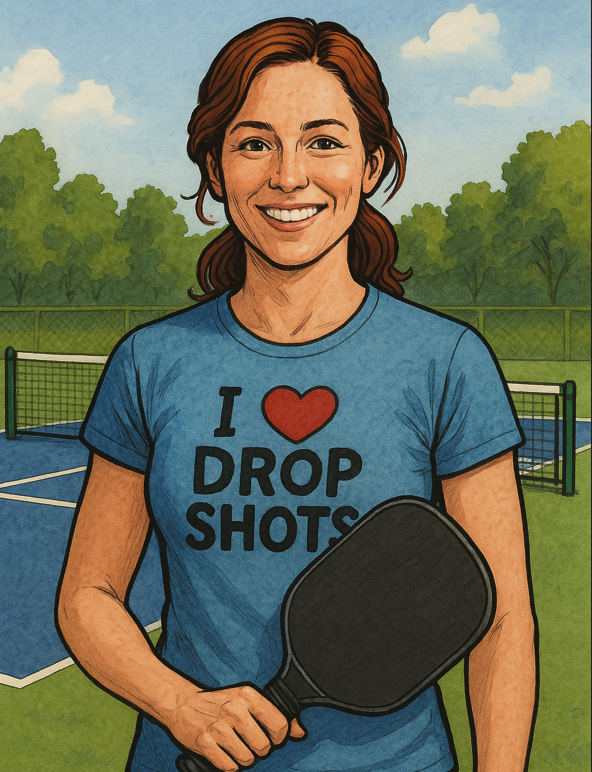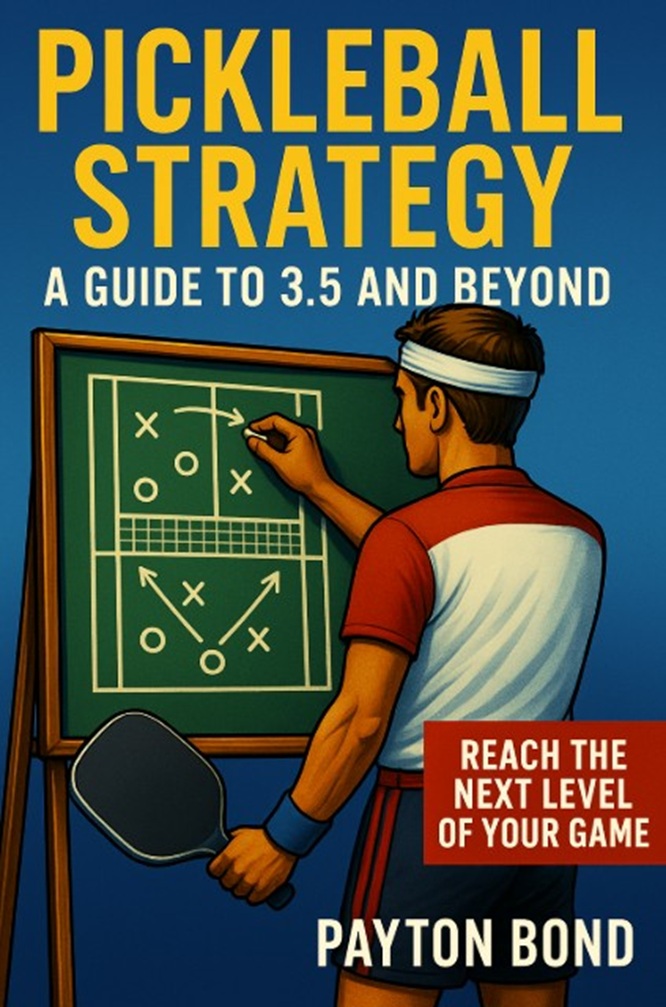
I’ve had a lot of discussions with pickleball friends lately about the third shot drop, the newer hybrid DRIP shot, and when to use each. I wanted to share some thoughts on why I still believe the third shot drop matters, especially for players aiming to break into the 3.5+ level.
Some argue that the third shot drop is being replaced by the DRIP shot (a hybrid drive/drop) or by drive-then-drop sequences like a fifth shot reset. I agree these strategies are very viable, particularly at higher levels of play.
But I believe the third shot drop remains a foundational skill. For intermediate players, it’s essential to learn and use it effectively before layering in more advanced options like the DRIP.
The DRIP shot is a slower-paced drive with heavy topspin, designed to drop at your opponent’s feet before they reach the kitchen. The topspin causes the ball to jump up and at them, often forcing a popup. It’s very effective, but if your opponents are already set at the kitchen line, the DRIP loses much of its bite.
In any case, a well-executed third shot drop is still your best ticket out of the transition zone and onto equal footing with opponents already at the net. It’s your opportunity to neutralize their kitchen advantage.
Here’s a quick review of the third shot drop, and why it still deserves a place in your game.
What is the Pickleball Third Shot Drop?
The third shot drop is a soft, controlled stroke that barely clears the net and lands in your opponents’ kitchen zone.
A good drop shot forces your opponents to respond with a dink or an upward swing motion, robbing them of the chance to smash or volley aggressively.
Why Use the Third Shot Drop?
Strong opponents are already at the kitchen line after the serve is returned, giving them the upper hand. The third shot drop slows the game and allows you to transition forward, leveling the playing field. This shot is a reliable way to advance to the kitchen line while slowing down the point. If you are always attacking with drives, you may cause errors or popups, but good players already at the net may counter your drives more easily than if you hit a good third shot drop.
Best time to use the Drop Shot
Some players believe that a deep return is always a time to drive the third shot. Counterintuitively, the best time to use the third shot drop is often when your opponent hits a deep, lofted return. Drives from deep on the court slow down as they travel, making them easier to defend.
A drop shot from deep that lands in the kitchen can disarm your opponent and allow you to advance.
Driving the Ball on a Short Return of Serve
While the third shot drop is a good go-to shot, there are exceptions. If your opponent’s return of serve is short, your best play is usually to drive the ball back at the player who returned the serve as they advance. A well-placed drive on a short return puts pressure on them before they reach the kitchen and allows you to advance.
Why Even Mediocre Drop Shots Can Work
Even if your third shot drop isn’t great it can still cause problems.
Aiming at the backhand can be a nightmare for opponents, especially when the shot is low and soft, forcing a difficult volley. Unlike a drive, a slower drop shot forces your opponent to swing more to generate power. Drives can be blocked or volleyed quickly because of their speed, but a slower drop shot demands finesse. Your opponent needs to return it with precision, especially if it’s aimed at their backhand and is hit below net height.
Think Ahead and be Ready with Placement
Before the point even begins, decide that you’re going to hit a drop shot and think about where you want to place it. If you are new to the drop shot, aim for the middle of the court to avoid hitting out of bounds.
Once you are landing shots, targeting the backhand is always the most effective strategy.
If your opponents have not stacked and both backhands are in the middle, this is an even better opportunity. A well-placed drop shot forces a backhand response.
Advancing to the Kitchen Line
Be ready to move quickly through the transition zone if you hit a good drop shot.
If your drop shot forces your opponent into an awkward upward swing or a dink return, move forward quickly with your partner.
If your opponent lofts or pops the ball up, put it away if it’s within reach above the net.
Many opponents will back-up and not hold their ground when facing a good drop shot. This is what you want, just be ready for a hard return if your shot bounces too high. If your bounce is low, your opponent will often hit it into the net or hit it upward.
Experienced players will often concede your advance after a strong drop shot and respond with a dink. They know if they try to make an aggressive shot off your drop shot, they will likely make a mistake. They transition the point into a dinking rally. This is what you want.
Staying Back on Bad Drops
- Not every drop shot is a masterpiece. If your drop is too high or too fast, your opponents will happily volley aggressively, or worse, smash it right back at you.
- Same thing with a high bouncing drop shot. Your opponent will reposition after the bounce and drive it back at you.
- In these cases, resist the urge to charge forward like a hero. Instead, move forward a bit, and stop with a split-step just as your opponent is hitting a volley back at you. The split-step is just a little hop you do to land on the balls of your feet in ready position. Now you are ready to react with another drop shot, the “5th shot drop.” Keep hitting drop shots and resets as you slowly move through the transition zone.
Pickleball Third Shot Drop Summary
To advance to the 3.5 level in pickleball, mastering the third shot drop isn’t just recommended, it’s required. Think of it as your golden key to unlocking higher-level play. Keep drilling it and using it in games.
Where are you with your Third Shot Drop? Have you made it part of your regular game? Or are you still building confidence with it? Let me know in the comments, or share the moment it finally clicked for you.
Check out Payton Bonds new eBook!
Pickleball Strategy – A Guide to 3.5 and Beyond
See it on Amazon.

👤 Follow Payton Bond
All Star and Top Contributor on multiple Facebook Pickleball Forums.
Contributor at TheKitchenPickle.com.
Visit Payton Bonds Facebook Page
Keep Learning
This is the last post in the Third Shot series.
Read the first post in the Dinking series: Dinking in Pickleball – The Key to a Strong Soft Game.

